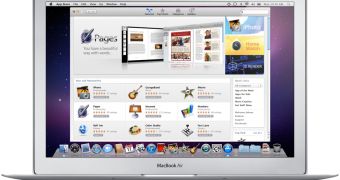Developers planning to submit their own program for approval in Apple’s Mac App Store will have to do some careful reading before even writing a single line of code. Cupertino “ported” the same strict rules it applied for iOS devs over to the Mac App Store guidelines, and even added a few new ones.
First off, Apple outlines that, “As a developer of applications for the Mac App Store you are bound by the terms of the Program License Agreement (PLA), Human Interface Guidelines (HIG), and any other licenses or contracts between you and Apple,” according to a report by Cult of Mac, which published the Mac App Store Review Guidelines.
“The following rules and examples are intended to assist you in gaining acceptance for your app in the App Store, not to amend or remove provisions from any other agreement,” Apple adds.
And the rules begin to pour, starting with “functionality.” Some highlights are available below (including our own highlights for rules that stand out).
- Apps that crash will be rejected - Apps that exhibit bugs will be rejected - Apps that do not perform as advertised by the developer will be rejected - Apps that include undocumented or hidden features inconsistent with the description of the app will be rejected - Apps that use non-public APIs will be rejected - Apps that are “beta”, “demo”, “trial”, or “test” versions will be rejected -
Apps that duplicate apps already in the App Store may be rejected, particularly if there are many of them
-
Apps that download other standalone apps will be rejected
- Apps that require license keys or implement their own copy protection will be rejected - Apps may not use update mechanisms outside of the App Store - Apps that spawn processes that continue to run after a user has quit the app without user consent will be rejected - Apps that use deprecated or optionally installed technologies (e.g., Java, Rosetta) will be rejected -
Apps that do not run on the currently shipping OS will be rejected
- Apps that are set to auto-launch or to have other code automatically run at startup or login without user consent will be rejected -
Apps that request escalation to root privileges or use setuid attributes will be rejected
-
Apps that add their icons to the Dock or leave short cuts on the user desktop will be rejected
Metadata, location, and trademark-related rules, as well as issues regarding user interface, purchasing and currencies, scraping and aggregation are also mentioned among the guidelines.
For example, on the UI front, apps must comply with all terms and conditions explained in the Apple Macintosh Human Interface Guidelines.
Apps that look too similar to Apple Products or apps bundled with the Mac ( e.g.: Finder, iChat, iTunes, and Dashboard) will also be rejected.
Apple then warns that “Apps that do not use system provided items, such as buttons and icons, correctly and as described in the Apple Macintosh Human Interface Guidelines will be rejected.”
In fact, Apple is so serious about the user experience with the Mac App Store that it will reject any app it finds too complex.
“Apple and our customers place a high value on simple, refined, creative, well thought through interfaces,” the guidelines read. “They take more work but are worth it. Apple sets a high bar. If your user interface is complex or less than very good it may be rejected.”

 14 DAY TRIAL //
14 DAY TRIAL //